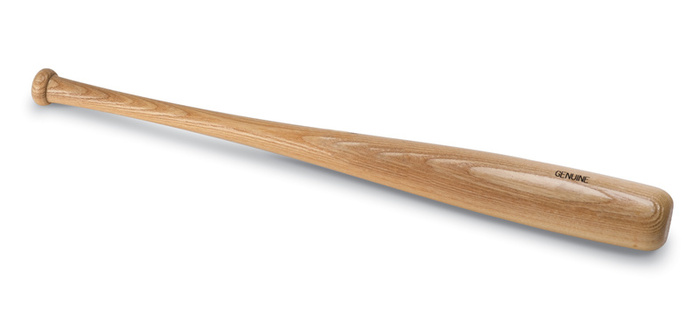Special Agent Grimsley

Before steroids and other “performance enhancing drugs” (in baseball parlance, “PEDs”) became the scandal du jour in Major League Baseball, batters were often accused of corking their bats — hollowing out the wooden insides and replacing it with lighter material such as a cork core (obviously) or rubber balls. The theory — which, as it happens, is wrong — is that the lighter bat allows the batter to swing the bat faster, and, therefore, allows him to hit the ball with more power.
Over the course of Major League history, dozens of players have been accused of corking their bats. Only six have been suspended, with Sammy Sosa the most recent, receiving an eight game league-mandated benching in 2003. In five of the six cases, the suspended player claimed that he didn’t know the bat was doctored because he was using someone else’s bat, or the batboy handed him the wrong one, or some other plausible-but-boring excuse for the infraction.
Albert Belle and the Indians had more style.
On July 15, 1994, Belle’s Indians faced off against the White Sox in Chicago. The two teams were neck and neck for the division lead. The White Sox’s manager, Gene Lamont, had gotten a tip that Belle’s bats were corked. He asked umpire Dave Phillips to confiscate one of Belle’s bats for inspection; Phillips, per the rule at the time, agreed, and brought the bat to the umpires’ locker room.
The Indians knew the truth: the confiscated bat was corked. All of Belle’s bats were corked. And Belle — a perennial Most Valuable Player award candidate — was all but certain to be suspended. But Belle’s teammate, relief pitcher Jason Grimsley had a solution — a lumber rescue mission he’d end up spearheading.
As he’d confess to the New York Times, Grimsley noticed that the visitors’ locker room and clubhouse had a false ceiling with removable tiles and, given that the umpires’ locker room was on the same floor, assumed that theirs had the same feature. While cinder block walls separated the rooms, Grimsley surmised that a person could go into the ceiling, travel over the walls, and end up in another room. With his teammates’ blessing, Grimsley and another person — not a player, but someone who worked for the team — grabbed a non-corked bat, used by first baseman Paul Sorrento, and a flashlight and went to switch out the incriminating evidence.
The mission took about an hour and had a couple of close calls — on the way there, they misjudged and ended up peeking into the groundskeepers’ quarters, and on the way back, just as Grimsley and accomplice were leaving, someone entered the umpires’ locker room. And while they succeeded in switching the bats, it was all for naught. Phillips, upon returning to the locker room, noticed that the bat had Sorrento’s name on it, not Belle’s.
The theft of the bat was not treated lightly. The White Sox called the Chicago police to investigate, who dusted for prints and were able to determine how the then-unknown bat burglar got into the locker room. The American League, which at the time was charged with doling out punishments to player for infractions such as corked bats, threatened to bring in the FBI to investigate. But instead, the league made the Indians an offer: provide the league office with one of Belle’s bats or risk further suspensions for the alleged bat swap.
The Indians agreed, and the league office x-rayed one of Belle’s bats and, in his presence and that of Cleveland General Manager John Hart, sawed it in half. The bat, as everyone knew, was corked, and Belle received a seven game suspension.
Grimsley, despite his confession five years after the “crime,” was never punished.
Bonus fact: Ever wonder how cork is made? Here’s how.
From the Archives: Swing and a Miss: The 17 year-old girl who struck out Babe Ruth — and then some.
Related: Cork, or, if you prefer, a secret agent costume.
